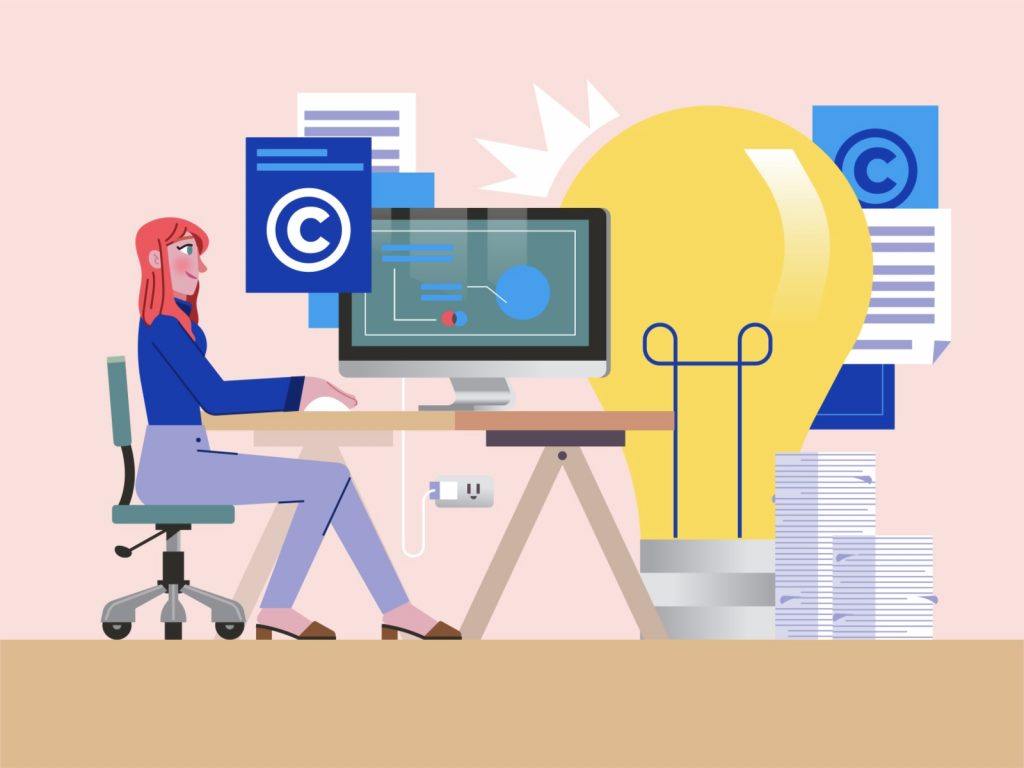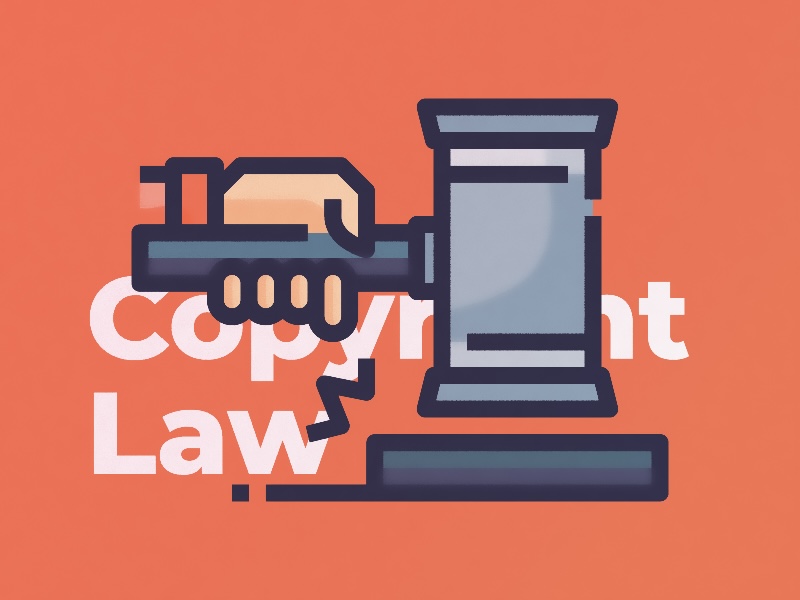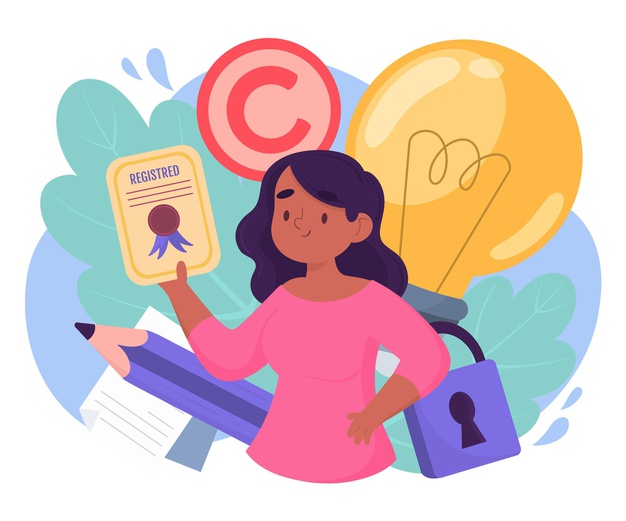
Copyright incorporates a bundle of rights vested in the proprietor or owner of copyright by Section 14 of the Act. These rights can be practiced only by the owner of the copyright or by other individuals who are properly authorized in such a manner by the owner of the copyright. These rights incorporate the privilege of adaptation, right of reproduction, right of publication, right to make interpretations and translations, communication to the public.
To keep pace with the worldwide prerequisite of harmonization, the Copyright Act, 1957, has brought the copyright law in India with the improvements in the data and information technology industry, regardless of whether it is in the field of satellite broadcast or PC programming, or digital technology. The amended law has likewise made provisions to ensure and protect the rights of performers as visualized in the Rome Convention.
Indian copyright law is at equality with the worldwide principles as contained in TRIPS. The Indian Copyright Act, 1957, completely reflects the Berne Convention for Protection of Literary and Artistic Works, 1886, and the Universal Copyrights Convention, to which India is a member. India is likewise involved with the Geneva Convention for the Protection of Rights of Producers of Phonograms and is an active member of the World Intellectual Property Organization and also of United Nations Educational, Scientific, and Cultural Organization.
Under the Copyright Act, 1957 the expression ‘work’ incorporates an artistic work containing an artwork, a sculpture, a drawing, diagram, a map, a photo, a work of architecture or creative craftsmanship, sensational work, literary work also includes PC programs, tables, compilations, and PC information databases, melodic work incorporating music just as graphical notations, sound recording, and cinematographic film.
Implementation or Enforcement of Copyright in India
The law of copyright in India not only accommodates civil remedies as a permanent injunction, damages or accounts of profits, delivery of the infringing material for destruction, and cost of the legal procedures.
Yet, besides makes infringement of copyright a cognizable offense punishable with detainment for a term of 6 months, however which may extend out to three years with a fine minimum of Rs 50000 yet may extend out to Rs 2,00,000. For the subsequent offenses, there are provisions for improved fine and punishment under the Copyright Act. The Indian Copyright Act, 1957, offers power to the police authorities to enlist the Complaint First Information Report, and act on its own to arrest the accused, search the premises of the accused and seize the infringing material with no interference of the court.
Term of Copyright
In the case of unique literacy, dramatic, musical, and creative works, the term of copyright is the lifetime of the author or craftsman, and 60 years counted from the year after the death of the author.
In the case of cinematographic films, sound recordings, after death publications, anonymous and pseudonymous publications, works of government, and works of global organizations are ensured and protected for a time of 60 years which is counted from the year after the date of publication.
Copyright Infringement
Direct Infringement:
Direct Infringement is a strict liability offense and guilty intention isn’t fundamental to fix criminal liability. The prerequisites to build up an instance of copyright infringement under this theory are:
- Ownership of Legitimate copyright; and
- Copying or infringement of the copyrighted work by the defendant or respondent.
Accordingly, an individual who innocently or even coincidentally infringes copyright might be held liable under the Copyright Act of the U.S. Also, under the laws of different nations, the guilty intention of the guilty party can be considered for deciding the quantum of damages to be granted for the alleged infringement.
Contributory Infringement
The contributory infringement pre-assumes the presence of knowledge and participation of the alleged contributory infringer. To claim damages for infringement of the copyright, the plaintiff needs to prove:
- That the defendant knew or should have known about the infringing activity; and
- That the defendant initiated, caused, or materially contributed to someone else’s infringing activity.
Vicarious Infringement
Vicarious copyright infringement liability advanced from the standard of the defendant’s superior. To succeed on a claim of vicarious liability for a direct infringer’s action, a plaintiff must show that the litigant:
- Had the privilege and capacity to control the direct infringer’s actions; and
- Determined a direct financial benefit by the infringing activity.
Hence, vicarious liability centers not around the knowledge and participation but rather on the connection between the direct infringer and the defendant.
A legitimate point of reference for vicarious copyright infringement has been created along two general relational lines. The first relational line includes the business and working relationship, while the second includes the lesser and tenant relationship.
Importance of Copyright
- To advance the advancement of valuable arts and science by securing the restrictive right of the creators.
- To give incentives and reward to the creators for creating unique and original content. The creators can be financially benefited by their copyrighted work and get appropriate acknowledgment.
- To encourage the creators to think of creative thoughts.
- The copyright holder can take criminal procedures against the infringer. The criminal remedy isn’t a choice in contrast to the civil remedy yet is integral to it. Accordingly, the copyright holder can bring both civil and criminal procedures at the same time.
- Section 63 of the Copyright Act, expresses that copyright infringement is a criminal offense.
- Copyright legally secures the creator’s work.
- Copyright causes the creator to exercise authority and control over his work.
- It gives ownership to the maker of the work.
- It is provided for work and not for thoughts.
Registration of Copyright
It isn’t obligatory to register the work to guarantee copyright and it begins the moment the work is created. Notwithstanding, it is encouraged to register the work for better security, it will fill in as evidence in a matter of dispute.
Section 13 of the Copyright Act, 1957, provides that the copyright can be given only for the original and unique work. Copyright is typically provided for 60 years.
History of Copyright Law in India
The Copyright Law of India was instituted by the British state and like the vast majority of the acts of that time; it was an impersonation of the English law.
The first Copyright Act of India was instituted in 1847, during the regime of East India Company. According to the Act, the term of copyright was either, for the lifetime of the author in addition to 7 years or 42 years. The legislature could grant the license of publishing after the death of the author if the owner of the copyright rejected permission. All suits and infringement identified with copyright went under the jurisdiction of the highest local civil court. The act was supplanted by the Copyright Act of the year 1914.
The Act of 1914 was the primary and the first copyright law of India. It was the principal law to incorporate all works of art and literature under the ambit of copyright. It was a copy of the English law of 1911. It was done by the British to facilitate the passage of literature over the colonial subcontinent.

The Copyright Act of 1957 came into power on the 21st of January, 1958 supplanting the 1911 Act. The Act other than correcting the copyright law additionally presented landmark changes, for example, provisions for setting up copyright office heavily influenced by Registrar of the copyright for registration of books and different works of art. It additionally established a copyright board to deal with the issues identifying with copyright.
Modern System of the Copyright Law
The Copyright Act, 1957 provides protection related to copyright in India. It gives copyright protection in the accompanying two forms:
- Economic Rights of the creator or author; and
- Moral Rights of the creator or author.
Economic Rights:
The copyright stays alive in unique literacy, emotional, musical, and artistic works; cinematographs movies, and sound recordings. The author of copyright in the previously mentioned works appreciates economic rights under section 14 of the Act. The rights are mostly, in regard of literally, dramatic and musical, other than PC program, to reproduce the work in any material structure including the storing of it for any medium by electronic methods, to give copies of the work to people in society, to make any cinematograph film or sound recording in regard of the work, and to make any interpretation or variation of the work. In the PC program, the author appreciates notwithstanding the previously mentioned rights, the right to sell or give on hire, or offer available to be purchased or enlist any copy of the PC program in any case whether such copy has been sold or given on hire on earlier occasions.

On account of aesthetic work, the rights accessible to a creator remember the option to repeat the work for any material structure, remembering portrayal for three measurements of a two-dimensional work or in two measurements of a three-dimensional work, to deliver or gives copies of the work to people in society, to remember the work for any cinematography work, and to make any transformation of the work. In cinematography film, the author appreciates the right to make a copy of the film including a photograph of an image, to sell or give on hire or offer available to be purchased or hire, any copy of the film, and to deliver the film to people in the society. These rights are likewise accessible to the author of a sound account.
Notwithstanding the previously mentioned rights, the author of an artwork, model, drawing or of a composition of a literacy, musical work, that he was the main owner of the copyright, will be qualified for reserve a right to participate in the resale cost of such unique copy given that the resale price exceeds rupees 10,000.
Moral Rights:
Section 57 of the Act characterizes the two fundamental moral rights of an author. These are the Right of paternity, and the Right of honesty.
The right of paternity includes the rights of an author to claim ownership of work and the right to prevent all others from asserting authorship of his work. The right of honesty and integrity enables the author to prevent twisting, mutilation, or different alterations of his work, or some other activity corresponding to said work, which would be or prejudicial to his honor, goodwill, or reputation.
The exception to section 57(1) gives that the author will not reserve any right to limit or claim damages concerning any variation of a PC program to which section 52 (1)(aa) applies.
It must be noticed that inability to show work or to show it as per the satisfaction of the author will not be considered to be an infringement of the rights presented by this section. The legal representative of the author may exercise the right on behalf of the author the rights presented upon an author of a work by section 57 (1), other than the right to claim authorship of the work.
Issues in Copyright Law
Plagiarism
Somebody may copy the copyrighted material and imagine it to be his unique work. Individuals are permitted to cite the work or refer to the work yet the individual who is utilizing the copyrighted work needs to give the credit to the copyright holder.
Ownership
The issue of proprietorship may emerge when a business works for an organization. If an individual is an employer then it is the association that has the copyright over the material. However, if that individual is an independent author, at that point, it is simply the individual who is the sole owner of the copyrighted material.
Derivative Works
Subordinate works utilize the previously existing work of somebody. It is another variant of previously existing material, like interpreting a book into another language. An individual requires a permit for it yet that has not obtained the permit for it then he can be made liable for copyright infringement.
Case Laws
In Caterpillar Inc v Kailash Nichani, the plaintiff a foreign organization was carrying on business in a few places in India including Delhi, through its Indian distributors and collaborators. The plaintiff asserted the relief of interim injunction for preventing infringement of its copyright by the defendant, however, the defendant was dealing in various products.
The Delhi High Court held that it was not important to show that the business is carried on by the plaintiff in Delhi ought to essentially be concerning footwear and article of clothing too. It is sufficient that the plaintiff was carrying out the business in the capital of India and further that there was an infringement of the plaintiff’s copyright concerning specific merchandise, which was being sold by the defendant in the capital.

The court observed that section 62 of the Copyright Act makes an undeniable and huge departure from the standard that the decision of jurisdiction should principally be administered by the convenience of the defendant. The lawmaking body in its intelligence presented these provisions setting down an inverse standard than the one set out in section 20 of the Code of Civil Procedure 1908. The object is to expose the transgressor with a burden instead of convincing the victim to pursue the former.
In David Pon Pandian v State of Madras, the High Court of Madras, while managing section 68A of the Copyright Act, held that the Court can take cognizance of the offense if the charge sheet is recorded inside the time of limitation recommended under Section 468 of the Criminal Procedure Code 1973 and in figuring the period of limitation and the date of commission of the offense is to be figured at the beginning stage. If the charge sheet isn’t filled thus, the Court has no power to entertain the complaint.
In Prakashak Puneet Prashant Prakashan v. Bulandshahrand Ashok Prakashan, the High Court of Allahabad observed that if the applicant distributes a book by adding any word previously or after the book he infringes and violates the copyright of the respondent.
In Hindustan Pencils Ltd v Alpna Cottage Industries, the Copyright Board of Goa held that where the similarities between the artistic works of the parties are basic and significant in material aspects, it would add up to copyright infringement and the defendant’s copyright is subject to be canceled from the register of copyright.
Conclusion
To summarize, the reason for copyright is to ensure the privileges of the creator and give the motivating forces and financial advantages to the creators. The extent of copyright stretches out to the literary or artistic works which demand innovation and creativity inventiveness including Database and PC programming. The registration of work isn’t important to be qualified for copyright however it is frequently advised to register the work since it fills in as a shred of evidence in the court of law.
If an individual infringes the copyrighted work of somebody, then he will be liable at risk for both the criminal liabilities and civil liabilities. Nonetheless, there are sure exemptions to the copyright encroachment for example in specific cases an individual isn’t needed to get the authorization of the copyright holder to utilize his work. However, it is constantly encouraged to produce unique and original work and not to utilize somebody’s copyrighted work without consent.
Editor’s Note
The article is very well researched. It talks about copyright, its infringement, laws related to it, etc. The author takes into consideration a case law and talks about its scope and the conclusion. The author concludes by saying that encouragement of producing unique products and prohibiting utilization of someone else’s copyrighted work is highly required.